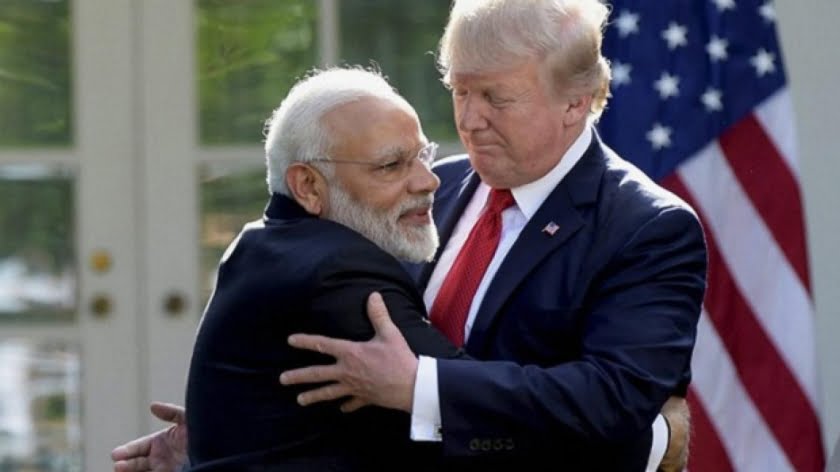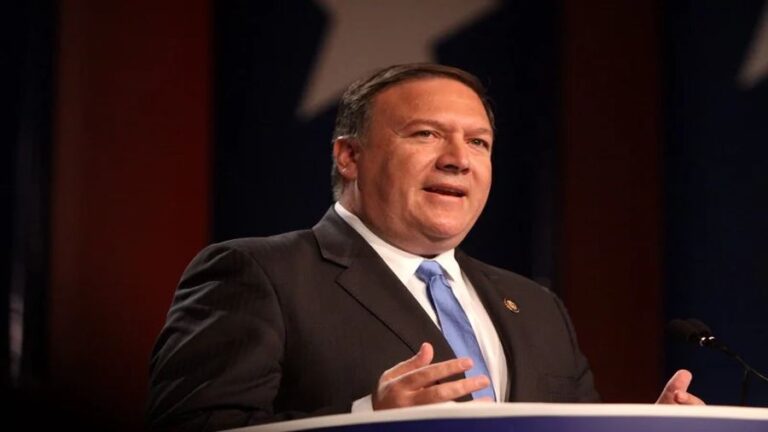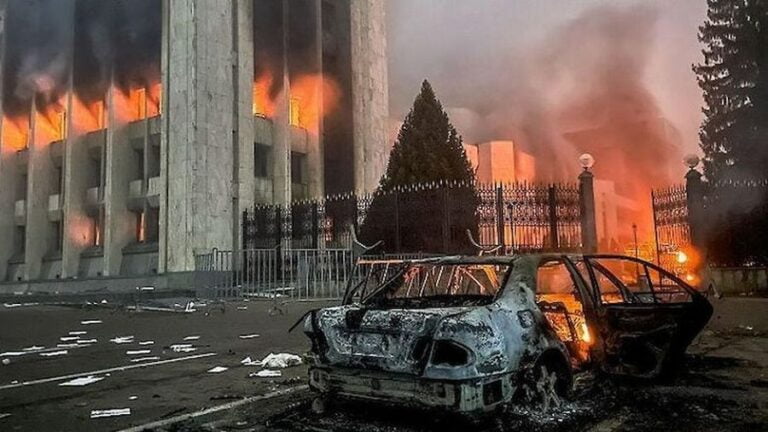Will China Give North Korea Up?
Observing the publications of Western media, the author sees a tendency for unilateral interpretation of the behaviour of the PRC. Both the results of the Asian tour of Donald Trump and a number of subsequent events (including those mentioned in previous materials with respect to the DPRK and the ROK) are treated as an unambiguous sign that, under the influence of the secondary boycott strategy, American agitation, personal rejection of Kim Jong-un by chairman Xi or other factors, China has finally ‘yielded’ to the United States and is about to surrender the Pyongyang regime to them.
Although, in the author’s opinion, it is impossible to talk about the ‘strategic reversal of the PRC from the DPRK’, there are grounds for such a position and they are related to the following: The issue of policy towards the DPRK in both political and scientific circles is quite debatable. The problem of ‘choosing between the lesser of two evils’ touches a nerve, and therefore in the speeches of Chinese experts, you can find a spectrum of differing viewpoints, although American and pro-American publications quote those that appear more pleasant. For example, the director of the International Relations Research Institute of Nanjing University Zhu Feng or professor of the People’s University Shi Inhuna, who have since 2010 claimed that ‘the rejection of North Korea’ will be popular within the country and strategically sound.
Reading this and regarding the position of this group as the mainstream, American experts are easily deceived, especially since they see that the classical model of ‘the PRC and the DPRK are connected like lips and teeth’ or ‘friendship, sealed in blood’ has fewer supporters and gives way to pragmatism. They know that, according to some information, Chairman Xi Jinping, to put it mildly, dislikes the North Korean regime and Kim Jong-un personally. In this context, they interpret Xi’s statement on the revision of the 1961 treaty interpretation as a sign that China has completely abandoned the idea of military support for the DPRK in the event of a military conflict, although in fact the Chinese position is more like the one that was taken by the Soviet side and communicated to the North Korean leadership at the height of the dispute related with the seizure of the American spy ship Pueblo in the spring of 1969. Military assistance to North Korea will be provided if it becomes the victim of an unprovoked invasion, first of all, on the ground.
Xi Jinping’s speech was similarly interpreted in July 2017 at Seoul National University, Xi stated that ‘China hopes that both sides of the peninsula will improve their relations and will support the possible independent and peaceful reunification of the peninsula.’ Support for the concept of unifying Korea as such, containing a hidden quote from the joint statement of 1972, has turned into support for the unification in the South Korean variant as the absorption of the North by the South.
Meanwhile, if desired, with a limited sampling of experts, anyone can come up with a very different idea of what ‘venerable scientists with connections in power’ think about this. Even the newspaper ‘Huanqiu shibao / Global Times’, traditionally perceived by the experts as a mouthpiece of the ‘Great Power’, does not always reflect the position of the authorities. And as for the fact that not only Xi, but also the Chinese ambassador to the DPRK never met with Kim Jong-un, it should be noted that Kim also had no official meeting with the Russian ambassador, and personal affection is not a fundamental factor; until the THAAD problem arose good personal relations between Xi Jinping and Park Geun-hye was given much prominance in the analysis of the situation.
As a result, whenever there is a noticeable cooling in relations between Beijing and Pyongyang, the talks of ‘Pyongyang’s surrender’ pop up. So, from the confidential materials of the State Department published by the WikiLeaks portal, it follows that in 2010 the deputy head of the South Korean Foreign Ministry, Chon En Wu, told the US ambassador in Seoul Katelyn Stevens that China no longer considers Pyongyang a useful or reliable ally and is ready to consent to the absorption of the North. It is unclear where the South Korean diplomat took this information, but it has been often quoted since.
But let us return to the recent events and begin by describing the results of Trump’s visit to China, which should be considered in ties with the general context that includes the results of the recent CPC Congress, and the development of a secondary boycott strategy and other measures of pressure on China. According to the Financial Times, after an April meeting with Xi Jinping at Mar-a-Lago Trump took a less militant stance against China, but then he became increasingly annoyed by a weak progress on the issue of trade deficits between the USA and China, as well as with its insufficient flexibility in the Korean question. That’s why we need to start with a little chronology.
As late as 18 August 2017, US Trade Representative Robert Lightheiser said that US President Donald Trump had instructed him to examine the China’s laws, policies and practices – anything that could damage American intellectual property, innovation, or technological development. Thus, the US embarked on a full-scale investigation into the Chinese government on suspicion of violating intellectual property rights, as well as in discrimination and restriction of American trade.
On 6 September, former head of the US delegation to the six-party talks and former US ambassador to ROK Christopher Hill, in an interview with KBS, called the cessation of trade relations with countries involved in any operations with the DPRK unrealistic and called for a reconsideration of the approach to North Korean problem through dialogue: Washington must persuade Beijing that China’s interests associated with the DPRK will not be affected by US actions.
On 12 September, acting assistant Secretary of State Susan Thornton stated that ‘the success of the pressure strategy will depend on cooperation with international partners, especially Beijing’. But ‘if China and Russia do not act, we will use the tools that we have’.
A similar statement openly pointing to the possibility of pressure on China was made by Secretary of the Treasury Stephen Mnuchin in an interview with CNBC, where he said that, if China does not comply with the sanctions regime adopted by the UN Security Council, Washington will consider the imposition of financial sanctions on Beijing, which may include overlapping access to the American and international financial system.
On 12 September US Treasury Secretary Stephen Mnuchin threatened China with a denial of access to the American monetary system. Meanwhile, if this happens, the impact will be felt by both countries. China is the largest investor in US Treasury bonds. If Beijing starts selling them, it will pose a threat to the financial stability of the United States.
On 15 September 2017, the chairman of the Foreign Affairs Committee of the House of Representatives of the US Congress, Republican Ed Royce asked the government to impose sanctions against 12 Chinese banks in the context of depriving Pyongyang access to the international financial system. The list of financial institutions introduced by Ed Royce includes the world’s largest bank-industrial and Trade Bank of China. The list also includes the China Construction Bank, the Agricultural Bank of China, the Chinese Trade Bank, the China Banking Corporation Minshen, the Development Bank of Guangdong, the Huasya Bank, the Shanghai Development Bank Pudong, the Communications Bank, Dalian Bank, Dandong Bank, and Jinzhou Bank.
On 21 September, speaking at the UN Security Council meeting on the non-Proliferation of Nuclear Weapons, US Secretary of State Rex Tillerson said: ‘If China is really striving for the de-nuclearization of the Korean peninsula ensuring stability on its borders in the region, it is time to work with the rest of the international community to exert pressure on the North that would compel Pyongyang to change its strategic calculations before it’s too late’.
On 24 October the House of Representatives of the US Congress, and later the Senate Committee on Banking Affairs, unanimously approved the ‘Otto Warmbier Bill’, aimed mainly at closing access to the international financial system for foreign financial companies working with targets of US and UN sanctions.
Chinese companies and banks were the first to come under threat and words moved to deeds quickly. US financial intelligence has banned American financial institutions from doing business with the Chinese Bank of Dandong, which was accused of cooperating with the DPRK to launder money and gain access to the global financial system in circumvention of UN sanctions. It is no accident that South Korean media noted the special importance of the bill in anticipation of Trump’s upcoming trip to Asia as another way to ‘persuade’ China to increase pressure on the DPRK.
And just before the trip, US National Security Advisor Herbert McMaster noted that Pyongyang threatens not only US allies, but is also a threat to the entire world. Therefore, all countries must do more to address this threat, and the United States urges them to increase economic and political pressure on Pyongyang.
Besides the secondary boycott measures, there were other accusations. For example, an American lawyer, an expert on the PRC, Gordon Chan said in an interview with Fox Business that China is transmitting weapons, equipment and technologies that are particularly important for the development of the missile programme to the North. According to him, the ballistic missiles launched in July were transported by Chinese-made mobile launchers, and the rockets launched in August 2016 and February and May 2017 were modifications of Chinese SLBM JL-1. At the same time on 15 August, General Joseph Dunford, chairman of the Joint Chiefs of Staff of the United States, arrived in Beijing, where he met with the Chief of the General Staff of the PLA General Fang Fenghui and said that there serious problems regarding the DPRK, but the situation will be resolved in the near future with the assistance of political leaders. Fang Fenghui, in turn, expressed his intention to make an effort to expand the dialogue between the United States and China.
The first assessments of the Beijing Summit looked positive, especially from the perspective of the heads of state. As the Chairman of the PRC, Xi Jinping, said on 9 November, the relations between the two countries are at a ‘new historic start’, and ‘China is ready to work with the United States of America to strive for mutual respect and benefit, to focus on cooperation, to regulate and control disputes’.
However, the description of the visit often met with replicas like ‘the parties had an in-depth exchange of views on bilateral relations and topics of mutual interest and reached a broad consensus’, which in translation from diplomatic language means ‘they spoke but did not agree’.
We should also note how the president of the United States expressed ‘high respect’ for Xi Jinping, who in trade affairs ‘only represents Chinese interests’. At the same time Trump criticised ‘previous administrations’ for trade imbalance in bilateral commerce and noted that he is intended to fix it.
At a press conference held after the personal meeting of the leaders, the head of the White House announced the agreement reached to fully follow all anti-North Korean resolutions of the UN Security Council. According to Trump, Beijing is able ‘in a short time and without much effort’ to force Pyongyang to denuclearize. He expressed strong confidence that the Chairman of the PRC ‘will seriously work on this’-‘I believe that there is a solution, just as you believe in it’.
Xi Jinping confirmed this position, but in a more round about way: The leaders reaffirmed their firm commitment to the de-nuclearization of the Korean Peninsula and the solution of the nuclear issue through dialogue and negotiation. As a result, Secretary of State Tillerson said that the United States and China are pursuing a single goal – to achieve the full and controlled de-nuclearization of the Korean Peninsula, but it takes a long time to discuss the methods and terms of their application.
These general words demonstrate to the author that there have been no apparent shifts in the Chinese position. ‘An agreement on strengthening contacts and coordination on issues related to the Korean peninsula’ could mean different things. As noted by INF experts, ‘China tried not to contradict the Americans on the most acute issues related to trade deficits, bilateral economic problems, the North Korean dossier. He reiterated his concern for the North Korean nuclear programme. The statements of Xi Jinping that it is necessary to strengthen the sanctions pressure on the DPRK, could not but please the American President’, and on 15 November 2017, Trump hastened to state that “PRC Chairman Xi Jinping has acknowledged that nuclear North Korea poses a huge threat to China, and we agreed that we would not accept so-called mutual freezing agreements.” On the very next day, 16 November the Chinese MFA spokesperson, Geng Shuang, refuted this by reiterating “this is the most real, fair and reasonable plan.”
A month later, talks about Pyongyang’s surrender received a new boost – on 13 December 2017, Secretary of State Rex Tillerson stated in a speech to the Atlantic Council in Washington that the United States and China are discussing the security of nuclear weapons in the DPRK in the event of an emergency and the disintegration of the North Korean regime. ‘For us, the most important thing is to ensure the safety of nuclear weapons that they have already developed, and to ensure that nothing gets into the hands of people to whom we do not want it to fall’. Moreover, in the event of the collapse of the DPRK regime, the US promised China not to deploy troops on the northern half of the peninsula. As soon as the task of ensuring the security of North Korean nuclear weapons is completed, the US troops will return to the South. According to some reports, Deputy Minister of Foreign Affairs Zheng Zeguang participated in these consultations.
It should be noted that in 2009, when the countries’ relations were at a similar level of aggravation, it was reported about confidential and semi-official consultations between China and the US for joint actions in the event of the collapse of the country, and some pro-Western experts assessed the situation as ‘the North has got Beijing so aggravated that they are ready to dump them’, putting equal sign between ‘consulted’ and ‘agreed’.
But this time they went further. The day before Tillerson’s remark, Oriana Skylar Mastro’s article appeared in the Foreign Affairs journal on 12 December 2017, titled “Why China Will not Rescue North Korea“, where the author not only extrapolates the views of Zhu Feng and Co on Beijing’s official position but also speculates on what can be offered to China so that the operation for the elimination of the DPRK should be with its connivance, even joint participation. Its main points are as follows:
- Over 20 years the relations between the PRC and DPRK have deteriorated and China will no longer defend North Korea militarily and does not consider the preservation of the DPRK as its top priority.
- If a US-DPRK conflict is limited to air attacks, Beijing will refrain from active participation. If it grows into something more, China may well enter the DPRK, but not to protect an ally, but to protect its own interests. As the DPRK is ‘in the Chinese sphere of influence’ it cannot sit idly by.
- The clash of American and Chinese troops on the territory of the DPRK may lead to a conflict over control of key positions such as nuclear facilities, which could lead to war. However, the author further quotes professor at Beijing University Xia Xinguo: If war becomes a distinct possibility then China should be prepared for it. In particular, be more willing to consider negotiations with interested countries on contingency plans.
- And once Beijing is ready to negotiate, Washington must recognize that Chinese intervention may be beneficial to America as well. The Chinese may have more information about the North’s nuclear facilities and can take them under control with less problems. A joint operation will make it possible to turn US actions into actions of an international coalition, or at least to reduce the level of strategic rivalry between the US and the PRC, demonstrating the ability to jointly combat global threats. If Beijing refuses to cooperate, we must at least reduce the chance of accidental skirmishes.
- Of course, this will require serious coordination and certain concessions. But it is necessary to use the window of opportunity while it exists.
- Every strategy has its own compromises. First, the South Koreans completely oppose Chinese intervention on the peninsula, not to mention a land invasion. Secondly, Chinese interference in North Korea would lead to the loss of US influence: In general, Beijing will not act to assist the United States, but to achieve its own goals, including a reunited Korea without US troops. However, according to the author, ‘the end of the US permanent military presence on the peninsula will be a reasonable price to ensure that the best result of a second Korean war’.
Of course, the material is very interesting, and in this context, the author wants to venture away and express their own opinion on this issue, also in the form of theses:
- Yes, China is considering the possibility of a conflict on the peninsula as a more serious threat than before and is beginning to take measures not only to prevent conflict but also to ensure the security of the country if it should flare up. All options are being taken into consideration, including nuclear war or the collapse of the DPRK; it’s necessary to be ready for any outcome. It is in this context that information on the construction of strategic roads or camps for future refugees, as well as new exercises or troop redeployments, should be considered.
- However, the readiness described above for any outcome, including the collapse of the DPRK, does not mean that this is what Beijing is trying to achieve.
- Accordingly, if the DPRK’s collapse is imminent, Beijing may indeed occupy a part of the DPRK’s territory in accordance with the plans of 10 years ago, not so much defending the North as its own interests. However, this will not mean the ‘joint elimination of the threat’, although it is likely that this rhetoric will be manipulated later on.
- At the same time, the most appropriate option for the national interests of the PRC still includes the existence of the DPRK as a separate state, and moving on to Plan B will only occur if the preservation of the North is impossible in the course of a conflict. The rhetoric about peaceful reunification is rather an obligatory ‘diplomatic compliment’, included in the statement about the establishment of diplomatic relations between Beijing and Seoul.
Moreover, this information was soon superseded by the following: On 18 December 2017 Trump again pressed China within the frame of the announcement of a new national security strategy. There, in contrast to the previous document, the role of China was ‘altered’ from an economic to a strategic adversary. The PRC (like the Russian Federation) is seen as a ‘revisionist power’ seeking to undermine the well-being of America, with China being blamed for ‘aggression in the South China Sea’. It was also noted that the United States will continue to support Taiwan and the South Asian countries to confront the spread of Beijing’s influence. In this regard, it is expected that tensions in foreign policy and trade issues may arise between the US and the PRC.
The Financial Times considers this step as ‘a sign of Trump’s disappointment with the inability to use contacts with the Chairman of PRC Xi Jinping to persuade Beijing to respond to US trade concerns’, but it was almost immediately known that the White House was considering imposing sanctions on large Chinese banks, which, in their view, facilitated North Korean trade and financial flows. So far, the US has sanctioned only one small Chinese bank, limited to individual companies or individuals, but how will the situation develop afterwards?
Thus, one can ask a rather important question. Of course, Trump’s administration is trying to pressure Beijing, using the fear of a military conflict, a secondary boycott or other levers to push China into harsh action against North Korea and actually ‘stifle the North with Chinese hands’.
However, the question arises: Is the North Korean theme only a legitimate reason to take a series of repressive or sanctioning measures against China, which will only formally arise from the fact that China is ‘helping’ North Korea or is not implementing sanctions with the zeal that Washington expects of it?
So you may ask the second question: How does Beijing understand this aspect of the American strategy and how does the Chinese movement against the North have a limit in this regard?
In the author’s opinion, such a limit is a new spiral of pressure on Beijing from Washington that could lead to the pressure of Beijing on Pyongyang to weaken. For from a strategic point of view. China is still in a state of choosing between the lesser of two evils, and from a tactical point of view its policy is determined by the balance of two trends, which can be conditionally called ‘Anti-Pyongyang’ and ‘Anti-Washington’.
And if after the 2017 nuclear test, China has been more annoyed by Pyongyang’s activities and has taken a number of steps in this regard; putting North Korea in its place, then further actions by the US may anger Beijing more, especially if the DPRK behaves cautiously.
By Konstantin Asmolov, Ph.D.
Source: New Eastern Outlook







